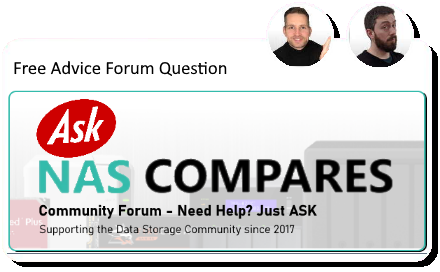Posts: 1,078
Threads: 1,079
Joined: Feb 2020
Reputation:
2
I run a small video production company and it's time to buy our first NAS - I want it accessible by 2-3 editors at a time (mostly 2), editing in Davinci Resolve on Apple hardware. Need about a 40tb capacity to handle the feature doc we're working on, plus all our other projects. Debating whether to keep it smaller and be more active at archiving once projects are done, or bigger and lazier. Either way, need a backup solution too. QNAP seem to be the bees knees, but is it overkill? Could I get away with a Synology at a third of the price? Or should I dive straight into a TrueNAS build? Help!
Posts: 5,351
Threads: 2
Joined: Jun 2022
Reputation:
35
For a small video production company working in DaVinci Resolve on Apple hardware, the main factors you’ll want to focus on are sustained read/write performance, multi-user access, data protection, and scalability. Based on your needs—2 to 3 editors accessing large video files, around 40TB of capacity, and a strong backup strategy—here’s how the three main options stack up for you:
1. QNAP – Most Flexible, Best for Editing Performance
If your editors will be editing directly from the NAS over 2.5GbE or 10GbE (especially 4K or higher footage), QNAP is a strong choice. Units like the TVS-h874, TS-h886, or TS-664 with 10GbE expansion card are powerful, support ZFS (for snapshots and checksumming), NVMe SSD caching, and tiered storage.
If you’re connecting over 10GbE and plan to run extra services like backup automation or Plex, QNAP is ideal. It is more complex to manage but offers better value for raw performance and flexibility. It’s not overkill if you intend to keep this setup for the long term.
2. Synology – Easier, Still Capable for Proxy Workflows or Staging
If your editing workflow mostly involves copying project files locally, or editing via proxies, a Synology DS1825+ or DS1525+ with SHR or RAID 6 and NVMe cache might be enough. Synology is much easier to set up and maintain, has excellent backup tools (like Hyper Backup or Snapshot Replication), and offers a clean experience.
However, for live editing, even with 2.5GbE, you may run into performance bottlenecks without SSD staging or 10GbE upgrades. If that’s acceptable, it’s a much more affordable path and better suited for studios that work on one project at a time and archive aggressively.
3. TrueNAS – Maximum Control, More Admin Overhead
If you’re comfortable building and maintaining your own system, TrueNAS SCALE gives you ZFS, fast NVMe caching, and full freedom over hardware. Great if you’re experienced or have in-house technical help. But it’s more DIY and lacks the polished ecosystem of QNAP or Synology.
If uptime, support, or ease of use is important, it may not be the best first NAS. But if you want a system you can scale and modify without vendor limitations, it’s unmatched.
Recommendation
If you want to edit directly over the network and keep things fast and fluid, go with QNAP (TVS-h874 or TS-664 + 10GbE).
If you’re editing from local drives and just need a shared archive and backup system, Synology DS1525+ or DS1825+ will be cheaper and easier.
If you want complete freedom and the best cost-per-terabyte ratio and don’t mind building it yourself, a custom TrueNAS build is ideal.





